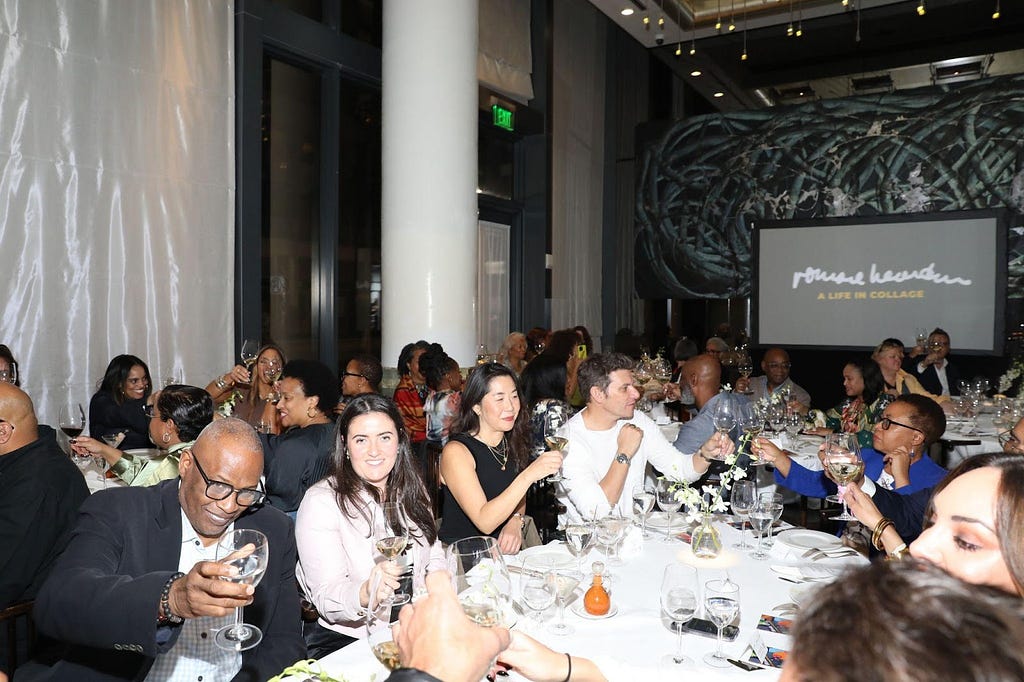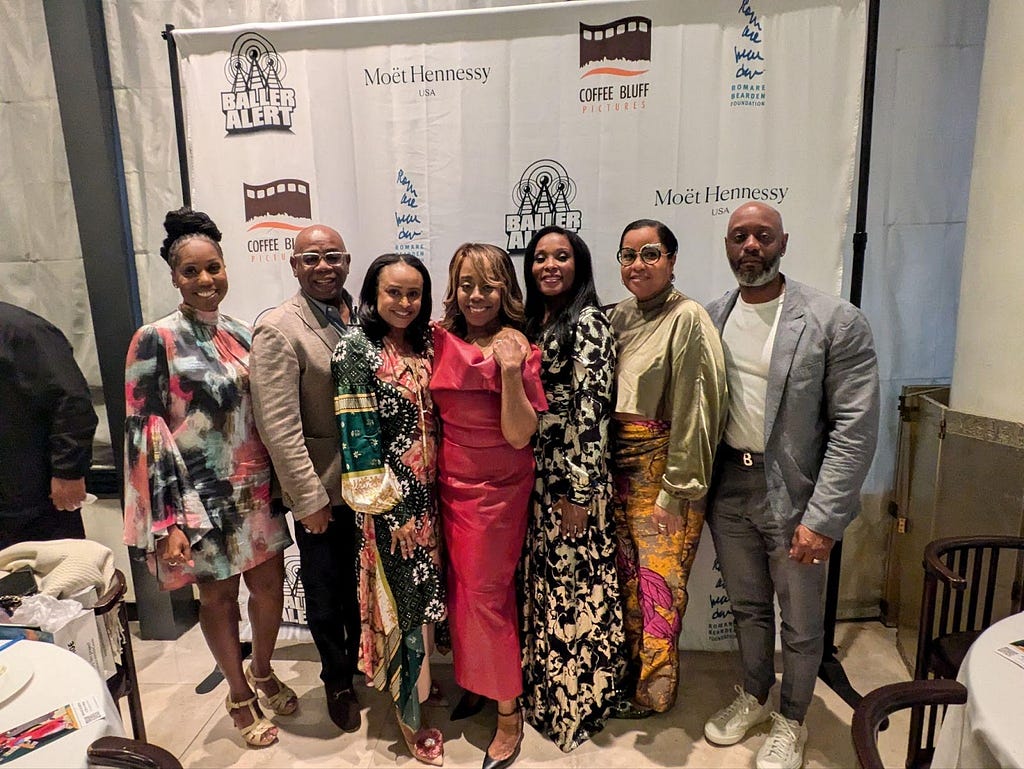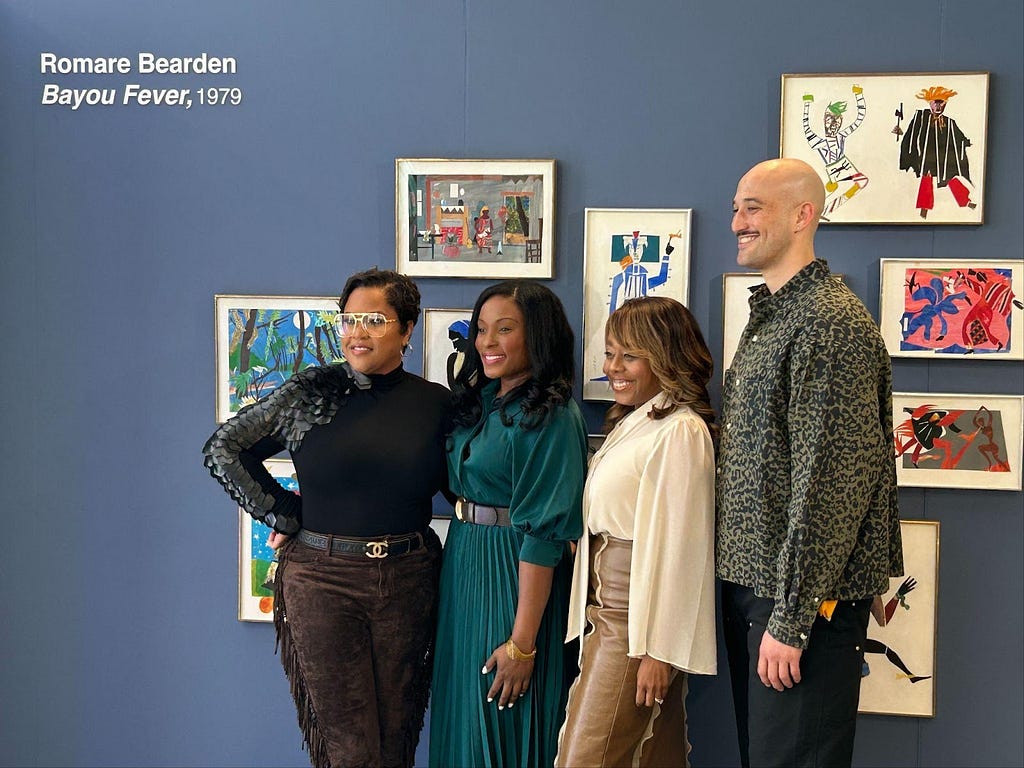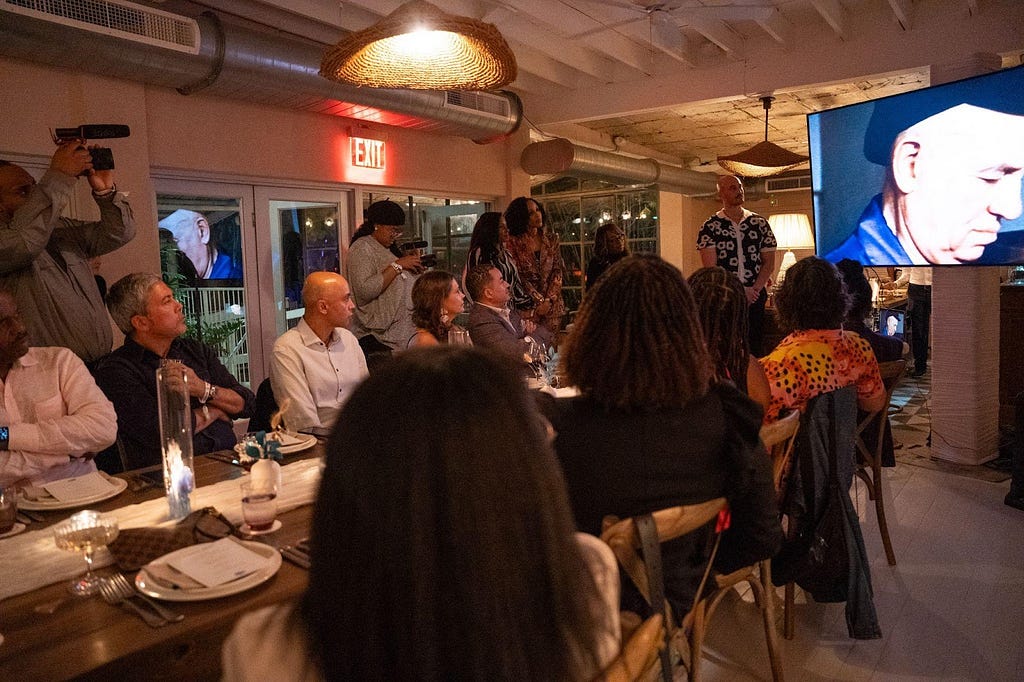Breaking the Marketing Mold: Deborah Riley Draper & Jocelyn Moore On 5 Innovative & Non-Traditional Marketing Strategies That Can Engage Audiences Like Never Before
An Interview With Chad Silverstein
…Welcome Diversity. Diversity in experience, background, and thinking generates new, diverse ideas. Every aspect of filmmaking benefits from new, diverse big brains contributing to the solutions for that film. The process for casting, crewing, shooting, distribution and engagement can and should change based on the film and filmmaker’s goals. Every film does not have to follow the same old path. Diverse Producers increase the diversity in thinking on how to develop, produce and distribute a film, which includes redefining who the audience is and how best to engage with them…
Traditional marketing methods are no longer sufficient in today’s dynamic and fast-evolving market. To truly engage and captivate audiences, businesses need to think outside the box and adopt innovative and non-traditional marketing strategies. What are these strategies, and how can they transform audience engagement? I had the pleasure of interviewing Deborah Riley Draper, Writer/Director, and Jocelyn Moore, Executive Producer, of the upcoming documentary film “Romare Bearden, A Life in Collage.”
Deborah Riley Draper is an award-winning filmmaker known for her compelling storytelling and ability to amplify diverse voices and journeys. Variety Magazine has previously recognized Ms. Draper as one of their “Top 10 Documakers to Watch.” She is the director and executive producer, alongside Cedric the Entertainer, of the August 2024 CBS documentary “13 Days in Ferguson,” which revisits the tragic days following the killing of Michael Brown and earlier in 2024, Deborah directed the acclaimed 4-part docu-series “James Brown: Say it Loud,” which was executive produced by Questlove and Mick Jagger and released on A&E.
Jocelyn Moore is a Tony-nominated co-producer of the 2023 revival of “The Piano Lesson,” August Wilson’s Broadway play, which was inspired by Romare Bearden’s painting of the same name. As a storyteller, Ms. Moore has successfully shaped the narratives of some of the highest profile individuals, companies, and global brands — always guided by the principle of building and sustaining communities.
Thank you so much for joining us in this interview series! To start, could you share when and how you got started in marketing and filmmaking and how you connected.
Deborah: I began my career in advertising working at BBDO and Ogilvy & Mather. I learned about ad agencies watching reruns of “Bewitched”; the Darrin Stephens character worked at the fictional agency McMann & Tate. For the record, I was a Draper in advertising before Don Draper appeared on the small screen in “Mad Men’. Madison Avenue and Hollywood are two sides of the same coin — both are in the business of storytelling and capturing attention.
Jocelyn Moore, a consummate (and Tony-nominated) storyteller, was previously the Chief Communications Officer for the NFL, one of the world’s biggest entertainment and storytelling brands. She now guides countless brands as an independent board member, strategic adviser, and investor. We first connected at a private dinner in Austin, Texas, around the kernel of an idea for the short film I directed, “OnBoard,” which premiered at the 2023 Tribeca Festival.
What has been the biggest shift in the marketing world as it pertains to the filmmaking industry for indie producers and can you give us an example of how it impacted you?
Deborah & Jocelyn: Independent filmmakers have unprecedented access to global audiences and powerful tools for building and engaging with those audiences. We can literally engage audiences directly, every single day. Brands recognize that connection and are partnering with filmmakers across formats and genres to create unique and meaningful experiences for their customers through stories that resonate.
During Art Basel Miami this year, we partnered with several diverse and iconic brands — including LVMH, Salesforce, Moët Hennessey, SoHo House, and Mr. Chow — to officially launch our new documentary film project, “Romare Bearden: A Life in Collage.” As a prelude to an exclusive screening of the teaser for our upcoming film, Mr. Chow and Moët-Hennessy curated a rare culinary experience — with Victor Blanquart’s artful storytelling connecting the contemporary art of Romare Bearden to the exceptional wine, champagne, and spirit pairings.

Along with our brand partners (shout out to Tiara Chesmer-Williams of Moët-Hennessy and Jose Lopez of Mr. Chow Miami!), we crafted an intimate, immersive experience that was built on meaningful, emotional connections and relationships — not transactions. The storytelling woven throughout the evening centered on the legacy, innovation, and craftsmanship of Romare Bearden, Mr. Chow, and Moët-Hennessy, fostering inspiration, meaning, and shared interests among those in attendance. The shared experience curated especially for this audience was one of new discoveries and unforgettable memories.

LVMH Culture House is aptly described as “a hub of dialogue and discovery where art, culture and luxury fuse to celebrate inclusivity and artistic excellence.” What better way for LVMH to highlight contemporary art and creativity — and to reaffirm its brand values — than by featuring Romare Bearden, one of the most important American artists of the 20th century who also had a deep connection to Paris? In collaboration with Corey Smith at LVMH and Bridget Moore of the DC Moore Gallery, we installed Romare Bearden’s rarely seen 21-piece “Bayou Fever” series (1979) on a striking blue wall, welcoming guests to the LVMH Culture House and inviting all to explore the extraordinary art and artists within.

Led by visionary Salesforce executive Suezette Yasmin Robotham, Salesforce’s PoV @ Art Basel: How Agents Can Transform the Creative World at SoHo Miami Pool House brought together global leaders to explore the intersection of technology, art, and creativity. Deborah moderated a timely fireside chat with Salesforce product and technology executives discussing how AI agents can empower the growing creator economy — photographers, filmmakers, producers, and more. Five Bearden images were showcased at a pop-up Bearden installation during the event, including his iconic November 1968 Time cover.

Each of these events employed innovative experiential marketing that authentically connected our brand partners to new and existing customers, while simultaneously allowing us to authentically cultivate audiences for our upcoming film. We are extraordinarily grateful to everyone who supported these incredibly impactful Art Basel events to officially launch “Romare Bearden: A Life in Collage.”

Can you explain why it’s essential for businesses to break away from traditional marketing and embrace new strategies?
Deborah & Jocelyn: When was the last time you used a dictionary, a printed map, or a rotary phone? Things change, people change, their needs and ways to express those needs change. We have to meet our audiences where they are. Often, they are ahead of us. Meeting consumer needs and demand are essential and will always be the assignment. Where, when, and how changes.
Could you share and briefly explain the first major change you made to break the trend of traditional marketing that was not so common?
Deborah: In 2012, I partnered with Tiffany & Co. to present the premiere of my fashion film “Versailles ’73: American Runway Revolution” at New York Fashion Week. The evening was the perfect partnership with the premiere screening at the Paris Theatre, attended by the fashion elite, athletes, and the indie film crowd. After the screening, Tiffany’s held a reception at their New York Flagship and featured live models in tableau with their new line of accessories. The evening garnered coverage from Bill Cunningham of the New York Times, the New York Post’s Page Six, and social posts from highly influential attendees. This partnership was a successful immersive experience, garnering the film and Tiffany’s a lot of traditional and social media currency in spaces usually saved for the week’s Haute Couture fashion shows. It was a marketing disruption of the best kind.
What specific results did you see after implementing this change?
Deborah: The most significant change was opening the door for more partnerships with brands and institutions and leveraging tentpoles typically reserved for big brands. In 2016, I partnered with Proctor & Gamble, an Olympic sponsor, to screen my film “Olympic Pride, American Prejudice” in Washington, DC in conjunction with the Team USA White House visit. This moment was incredibly historic and poignant as the 1936 African American Olympians who were not in the Roosevelt White House, and this effort overturned an 80-year snub. The families of those athletes who defied Jim Crow and Hitler were honored by Team USA and President Obama. This effort changed history, righted a wrong, and celebrated the importance of sports as diplomacy. As a result of the press, we created a public mini-course at Morehouse College based on the film, which enrolled hundreds of people from over five countries.
How do you ensure that these new marketing strategies resonate with your target audience?
Deborah: We have a lot of new tools and technology that enable a very basic thing: listening, asking questions, and then listening more.
Great. Now, let’s dive into the heart of our interview. Could you list “5 Innovative & Non-Traditional Marketing Strategies That Can Engage Audiences Like Never Before” in filmmaking?
Deborah & Jocelyn:
- Create Authentic Connections and Embrace Organic Ones. Authentic connections foster trust, which is the foundation of any strong relationship. Connection is a fundamental human need. Everyone desires more meaningful, genuine, relatable interactions based on a shared purpose. It’s not just about how brands and filmmakers create those authentic connection experiences; it’s also about how brands and filmmakers pivot to embrace organic connections not of their creation (think of the #BlackPantherChallenge, which was not created by Disney or Marvel or Levi’s® Launching its “Launderette” ad campaign with Beyoncé after the release of “Levii’s Jeans” from her Cowboy Carter album).
- Welcome Diversity. Diversity in experience, background, and thinking generates new, diverse ideas. Every aspect of filmmaking benefits from new, diverse big brains contributing to the solutions for that film. The process for casting, crewing, shooting, distribution and engagement can and should change based on the film and filmmaker’s goals. Every film does not have to follow the same old path. Diverse Producers increase the diversity in thinking on how to develop, produce and distribute a film, which includes redefining who the audience is and how best to engage with them.
- Use Omnichannel, Cross-Cultural Marketing and Hire Multicultural Individuals and Agencies to Lead the Work. “Black Panther” created an unforgettable connection with audiences across demographics. Evidence is in the box office numbers and on social media posts across generations, continents, genders, and races. Brands should have individuals such as Roy Broderick, Jr., Charles D. King, Bozoma Saint John, and Myles Worthington on speed dial.
- Deploy Technology. In Deborah’s intro to the Salesforce fireside chat during Art Basel, she reflected on the significance of 1968 — a year of profound change and revolution in our country, and a pivotal technological moment marked by “The Mother of All Demos.” That landmark computer demonstration by Douglas Engelbart introduced many fundamental elements of modern personal computing, including video conferencing, the computer mouse, and a collaborative real-time editor. Bearden, a pioneer in utilizing the photostat machine to manipulate and reimagine images, is a powerful example of embracing technology to break new ground as an artist and creative.
- Leverage Marketing Amplifiers — Art, Fashion, Music, and Sports. “Wicked” leveraged fashion as a tool during its press tour to further connect its two stars and their characters, to center the film’s themes, and to illustrate its brilliance as a work of art.
What challenges might companies and filmmakers face when transitioning away from traditional marketing strategies, and how can they overcome them?
Deborah & Jocelyn: For companies and independent filmmakers alike, transitioning away from traditional marketing strategies can actually be an opportunity as opposed to a challenge. Many of the traditional marketing and advertising methods are not cost-effective for independent filmmakers, and we are often in a better place to compete via social media and other direct-to-consumer platforms.
How do you measure the success and ROI of these new marketing strategies?
Deborah & Jocelyn: The data lets us know if it’s working. Independent filmmakers have access to many of the same tools that studios have:
- Google Analytics: We can access website traffic and audience behavior.
- Social Media Analytics: We have the built-in analytics dashboards for each platform which enables us to measure likes, shares, comments, and follower growth.
- Film Festivals/Events: Invitations to participate in festivals as well as audience attendance and audience feedback.
- Video-On-Demand (VOD) Platforms: We can see real-time data on comments, views, rentals, and sales.
We constantly test and optimize.
Looking forward, how do you see the role of innovative marketing in film/TV/content productions evolving in the next 5–10 years?
Deborah & Jocelyn: Filmmakers have a special connection with their audiences that is unique and specific to each story they tell. Data will help deepen that relationship with immersive experiences on and offline, which will be the key.
What advice would you give to business leaders who are hesitant to move away from traditional methods?
Deborah: I suggest reading the case studies on Blackberry, Toys “R” Us and Montgomery Ward. Additionally, I’d recommend one of my favorite books, “Mavericks at Work: Why the Most Original Minds in Business Win” by William C. Taylor and Polly LaBarre.
Jocelyn: I agree with Deborah and would add four more marketing case studies for consideration: everything Beyoncé does, Tyler Perry with Tyler Perry Studios, Ryan Reynolds with Maximum Effort, and Fawn Weaver with Uncle Nearest.
Can you share any upcoming initiatives or plans you have for further innovating your marketing strategies?
Chad, we can’t give all our secrets away! However, we’d love to stay in touch over the next 24 months as we bring “Romare Bearden: A Life in Collage” to life. Bearden was an innovator in so many ways, and we can only honor him by ensuring innovation is a critical part of how we approach this story and how we share it with the world.
How can our readers follow your work and learn more about your approaches to modern marketing?
Readers can follow the Romare Bearden Film on Facebook, Instagram (@romarebeardenfilm), Threads (@romarebeardenfilm), and Twitter (@RBeardenFilm) and at www.romarebeardenfilm.com.
Readers can follow Deborah Riley Draper on LinkedIn and Coffee Bluff Pictures on LinkedIn, Instagram and on the site at www.coffeebluffpictures.com and www.deborahrileydraper.com.
Readers can follow Jocelyn Moore on LinkedIn, Instagram (@msjociemoore), and Twitter (@msjociemoore), and at www.jocelynmmoore.com.
This was great. Thank you so much for the time you spent sharing with us.
Breaking the Marketing Mold: Deborah Riley Draper & Jocelyn Moore On 5 Innovative & Non-Traditional… was originally published in Authority Magazine on Medium, where people are continuing the conversation by highlighting and responding to this story.
